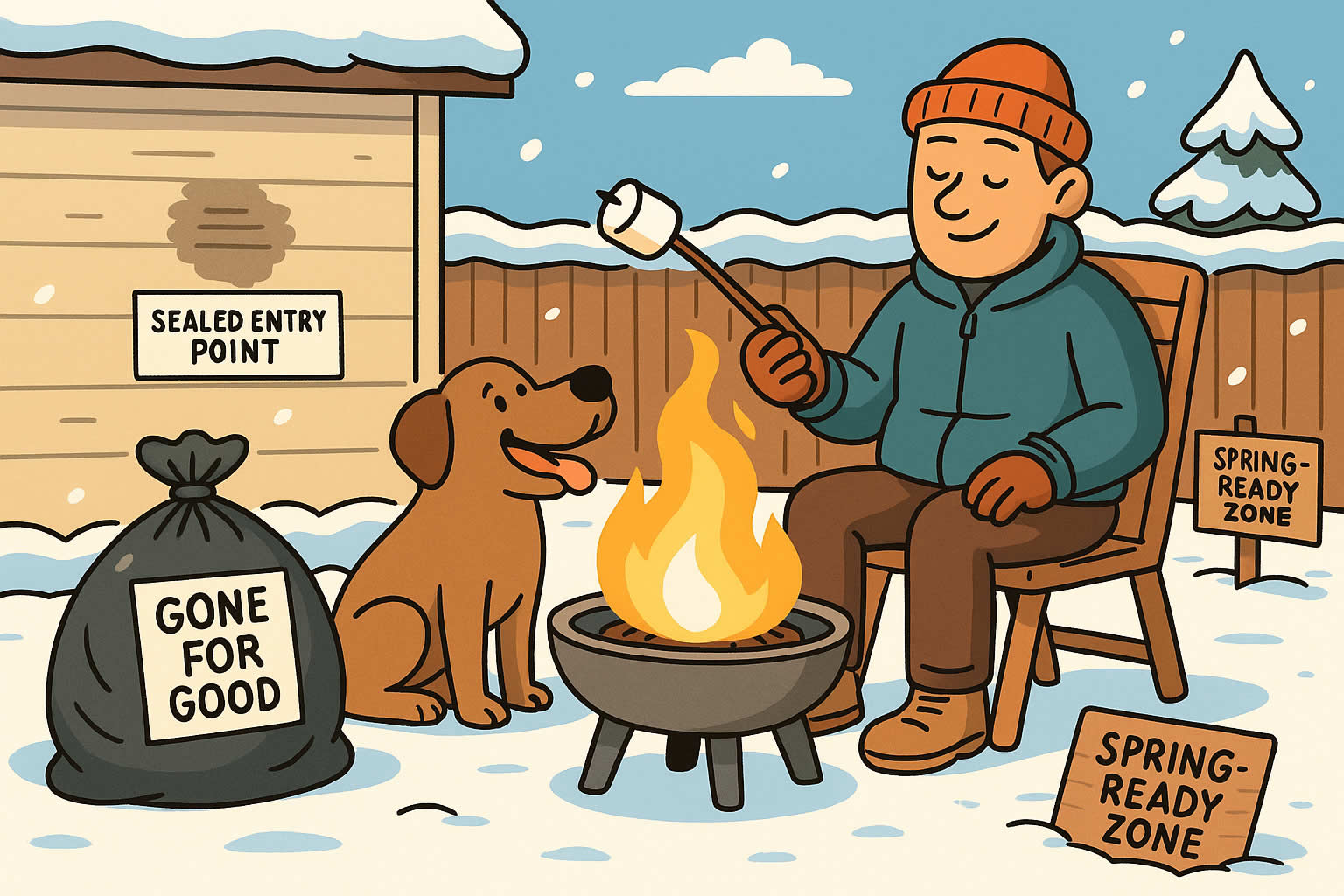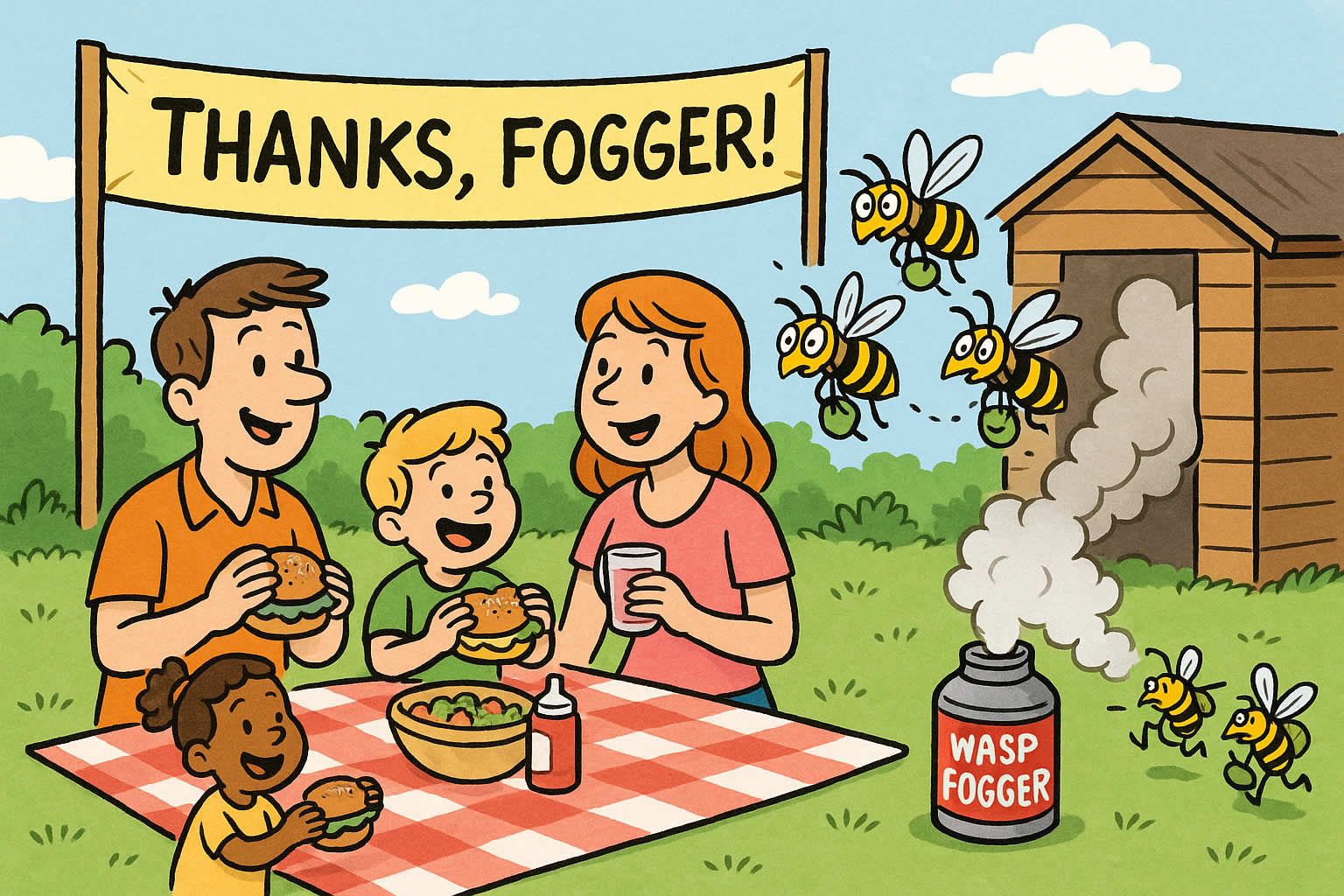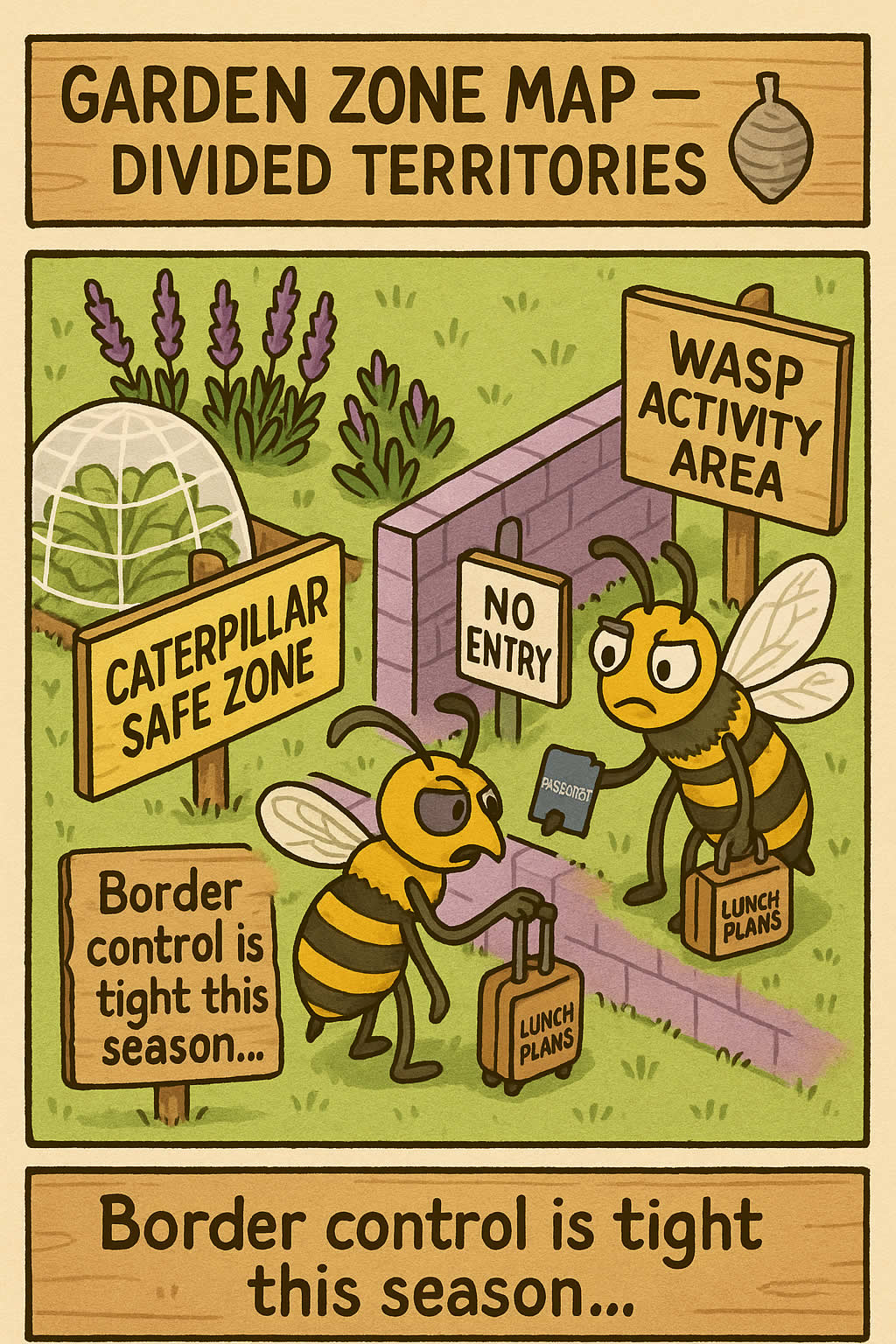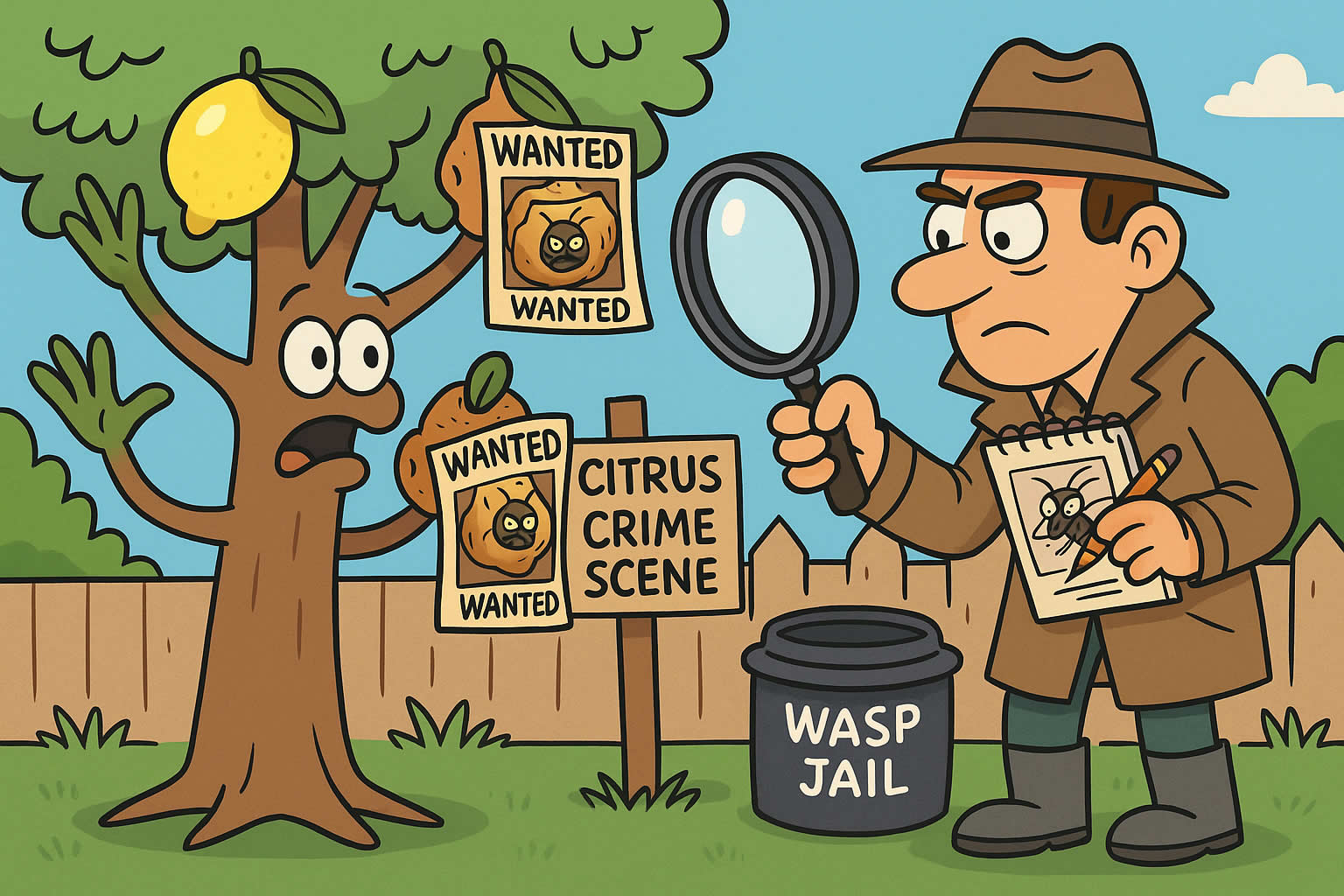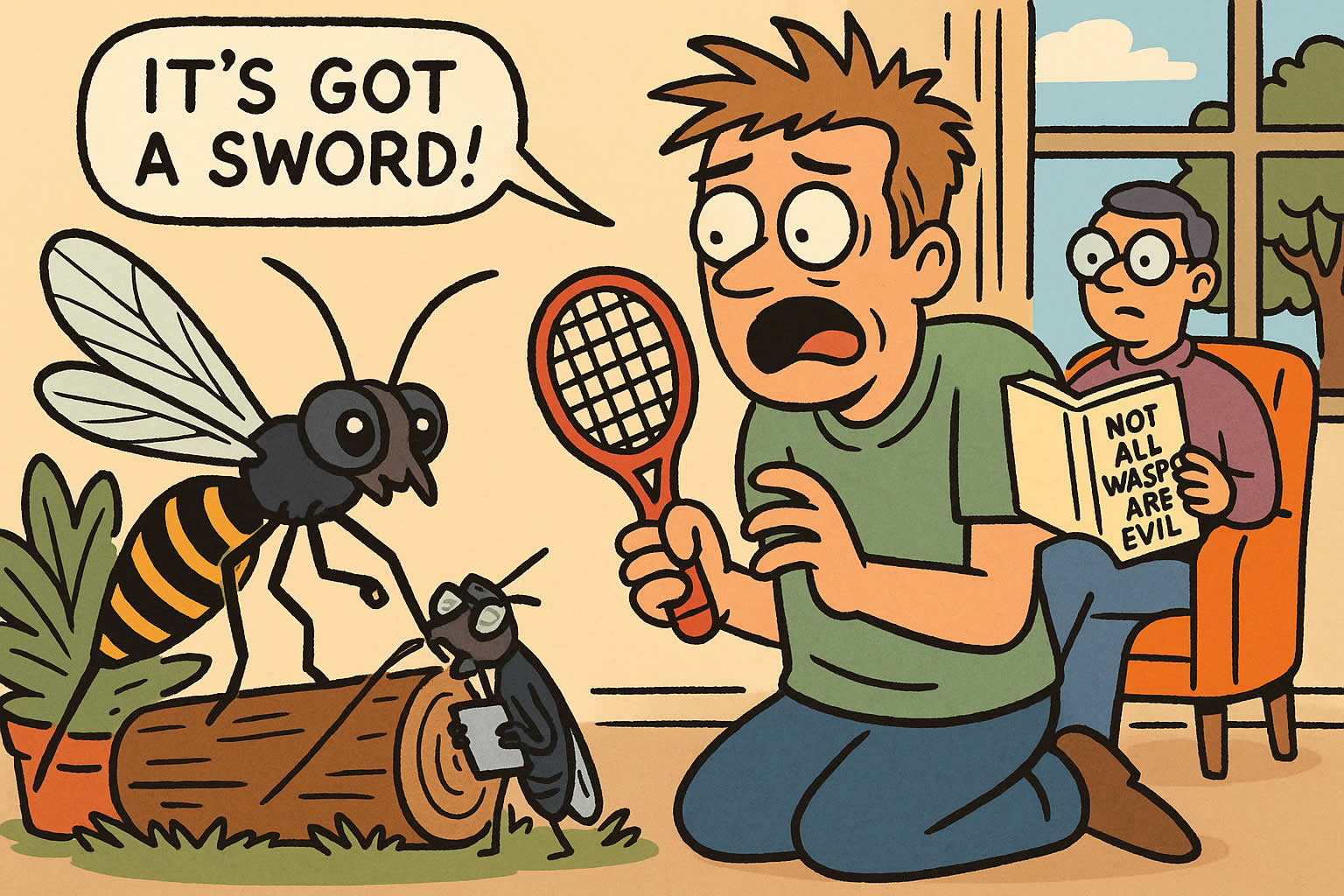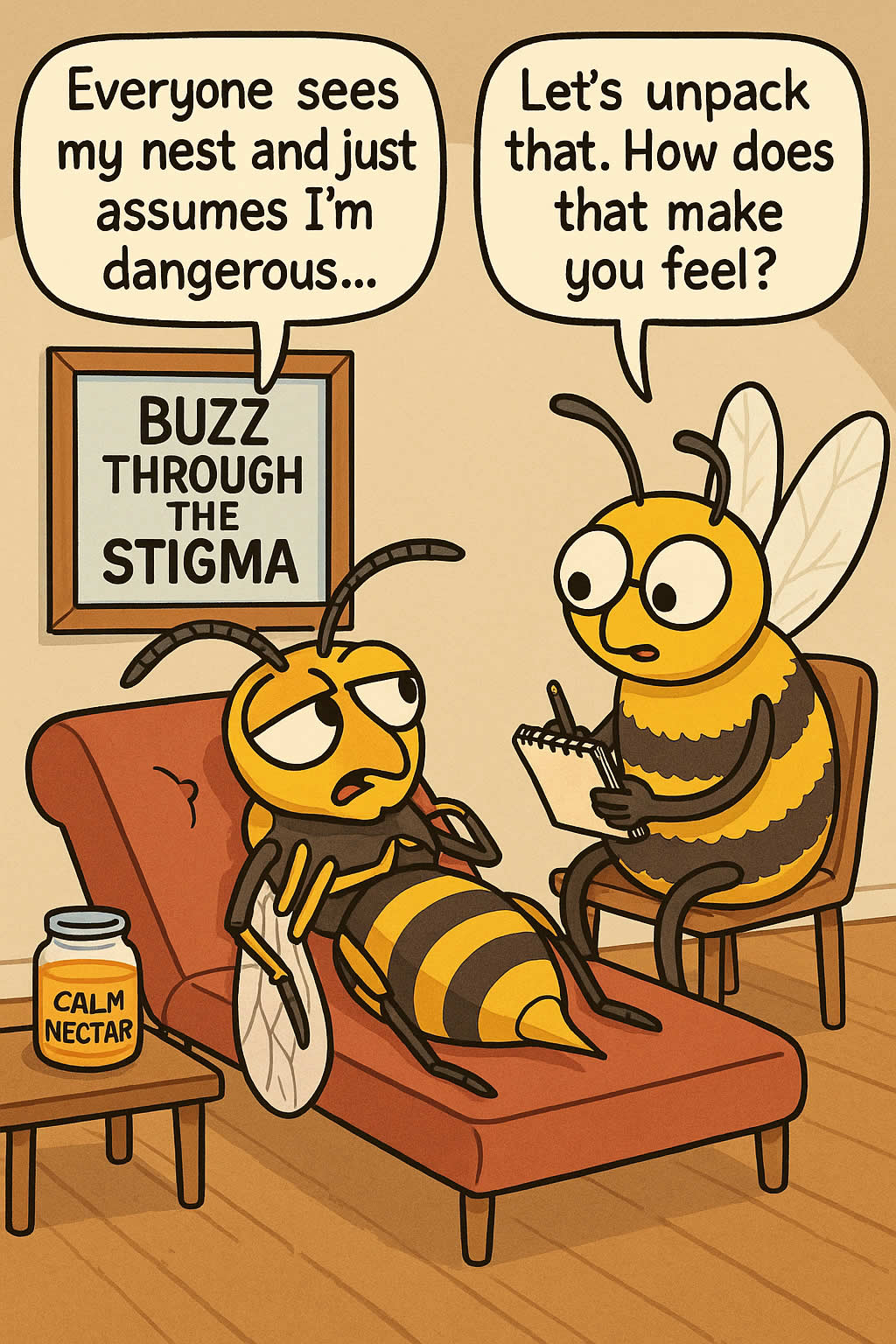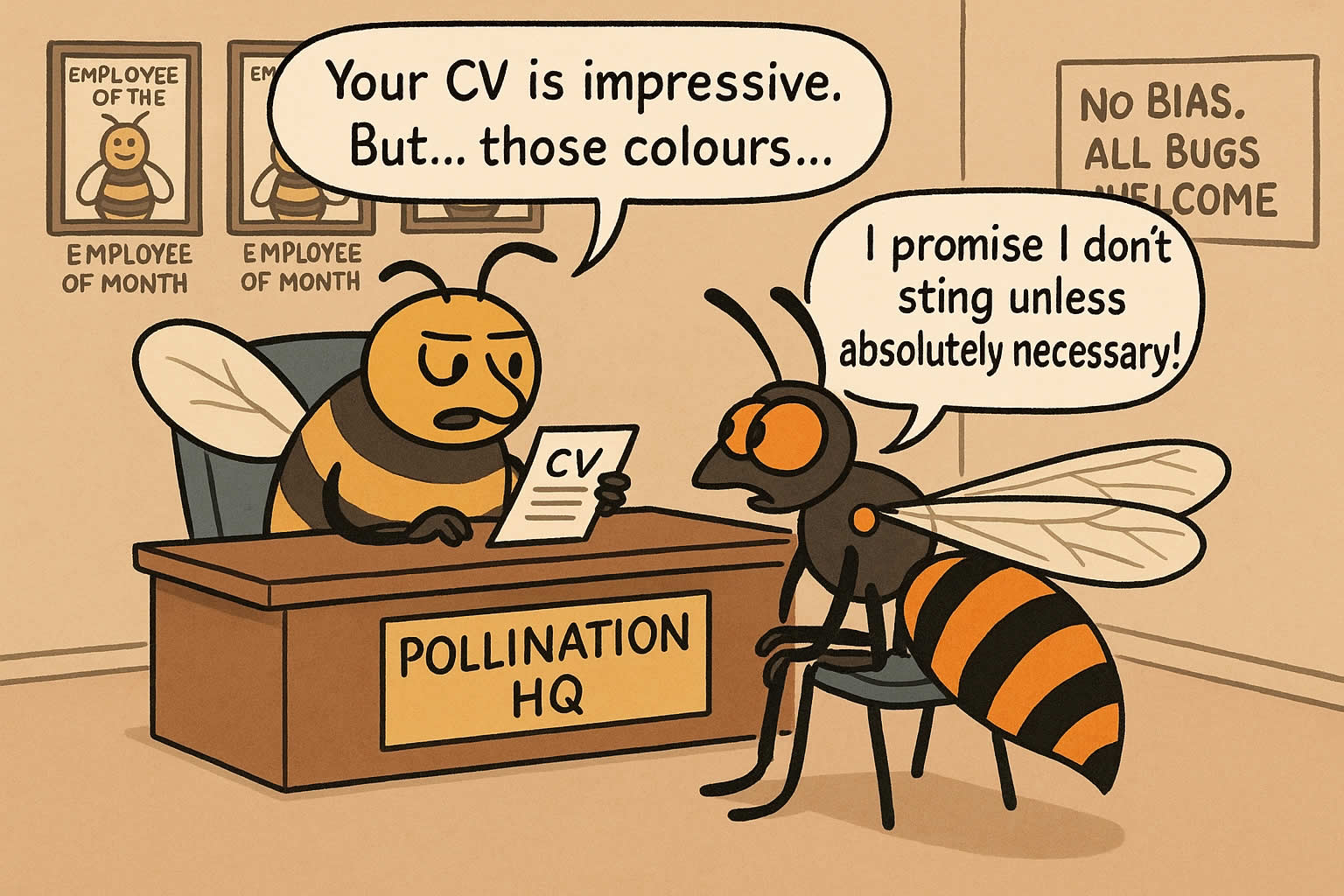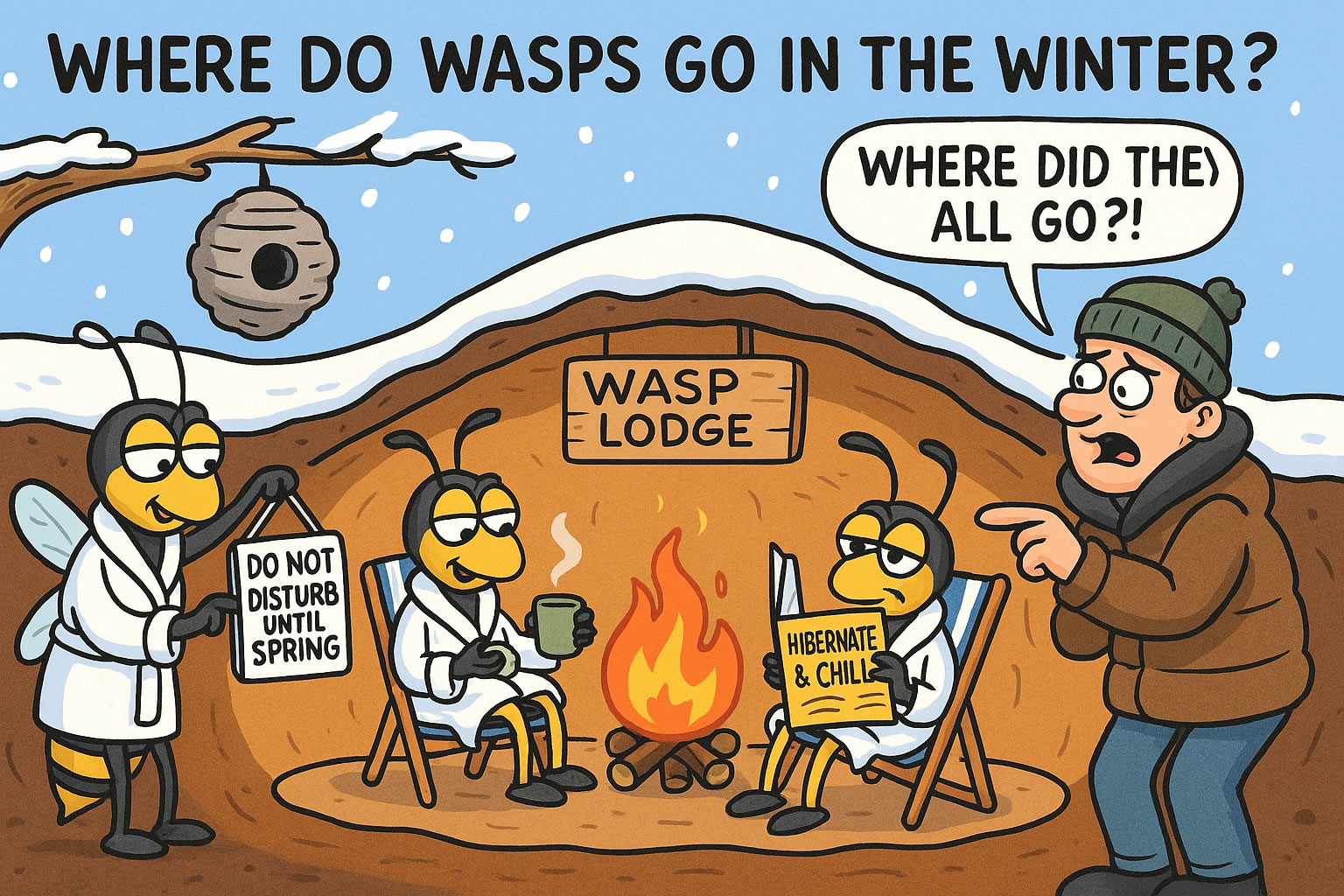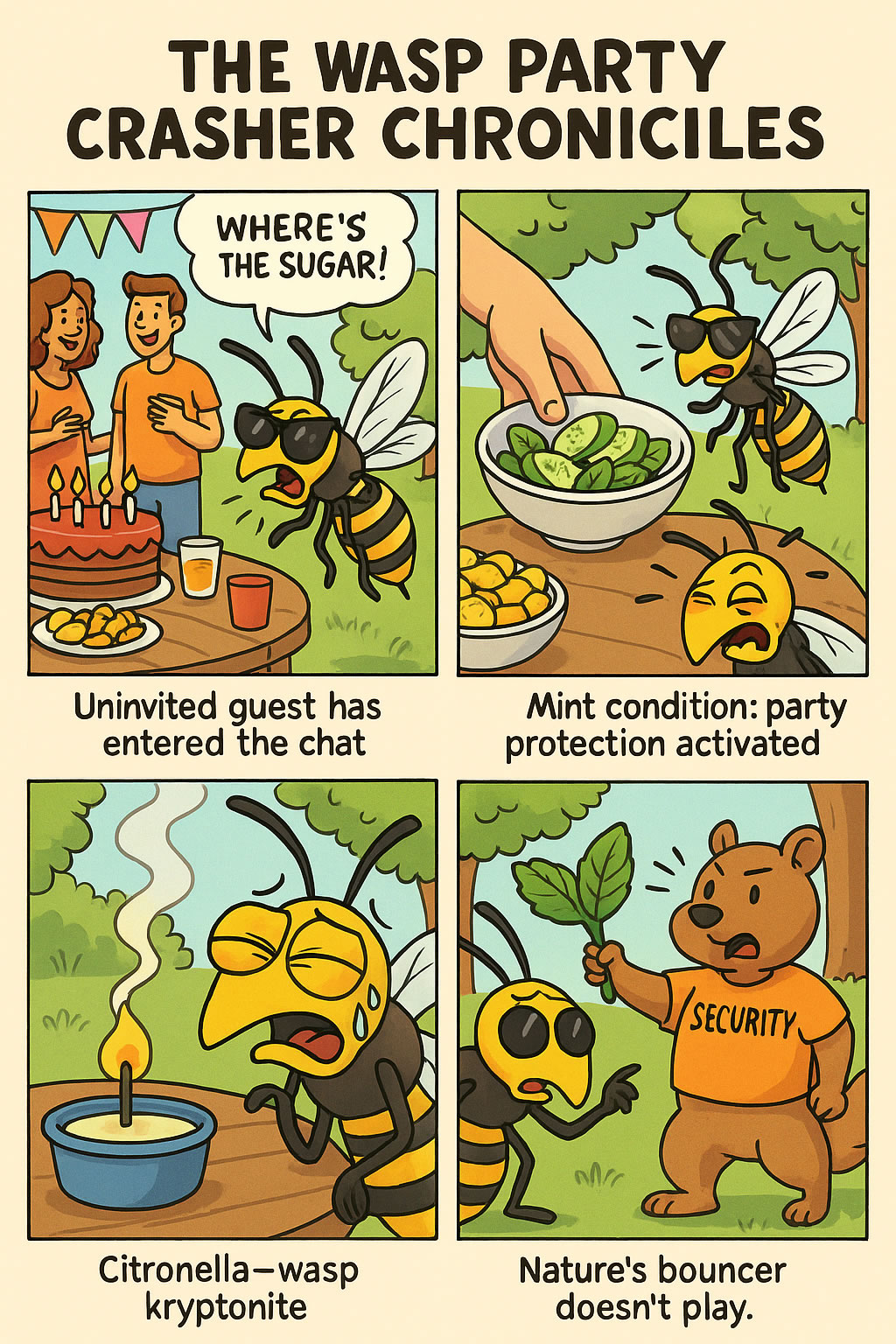Related Queries
ToggleThere’s a good chance you’ve spotted a wasp nest clinging to the eaves of your roof, tucked in a shed corner, or hidden inside your loft. In summer, the thought of getting close would probably make you back away fast. But now that winter’s here and the garden’s quiet, the nest doesn’t look as threatening. You might be wondering: Is it finally safe to remove it?
Winter can feel like a good time to deal with wasp nests—and in many cases, it is. But there’s still a right way and a wrong way to go about it. If you want to stay safe, protect your home, and stop the wasps from coming back next spring, it’s worth knowing exactly what to do.
This guide breaks it down for you. You’ll learn when it’s safe to act, how to remove the nest properly, and what steps you can take to stop new nests from forming in the first place.
Know What You’re Dealing With
Before you start pulling things down or poking around with a broom handle, take a moment to understand what you’re working with. Knowing a bit about how wasps behave in winter makes it much easier to remove the nest safely and prevent problems later.
What Happens to Wasps in Winter
Most wasps don’t survive the winter. The colony dies off once temperatures drop, leaving behind an empty shell of a nest. The queen, however, is a different story. She hibernates through winter, often somewhere dry and sheltered—but not necessarily in the old nest. She’ll emerge in early spring to build a brand new nest from scratch.
That’s important to remember: wasps don’t reuse old nests. Once a nest has been abandoned, it won’t become active again. But don’t assume every nest is already inactive—especially in late autumn or the very start of winter.
Types of Wasp Nests You Might Find
Depending on where you live, the nest you’re looking at could belong to paper wasps, hornets, or yellowjackets. All three build paper-like nests using chewed wood mixed with saliva, but the size and location can vary. Hornets tend to build large, football-sized nests higher up in trees or under roofs. Paper wasps create umbrella-shaped nests that hang openly. Yellowjackets often nest underground or in walls.
The structure can help you identify the type, which is useful when planning removal. Hornet nests, for example, can be more difficult to reach and sometimes more dangerous due to their size.
Are Wasp Nests Active in Cold Weather?
In colder months—especially below 10°C—wasps slow down dramatically. Most die off or go dormant. But that doesn’t mean every nest is empty right away. A warm snap or indoor heating can keep a few wasps active, especially if the nest is inside a wall cavity, loft, or shed.
Before you touch anything, observe from a safe distance. Look for any movement around the nest entrance. You can also listen quietly—if the nest is still active, you might hear buzzing. No sound, no movement, and consistent cold temperatures are a good sign it’s safe to proceed.
Assess the Safety of Removal
Once you’re fairly sure the nest is no longer active, you still need to think about safety. Even in winter, there can be risks if you rush into removing it without checking everything first.
How to Tell if the Nest Is Empty
Start by inspecting the area during the coldest part of the day—early morning works best. Use binoculars or a torch to look for wasps coming or going. If it’s been days or weeks since you’ve seen any wasps near that spot, that’s a strong clue that the nest is abandoned.
Tap the structure gently with a long stick or broom handle (from a safe distance). If it’s silent and there’s no response, it’s probably empty. But remember—some nests inside lofts or wall spaces may not be as easy to access. Always be cautious.
When Is It Safe to Remove a Nest?
The safest time to remove a nest is in deep winter—between December and February—when temperatures have stayed consistently low and all signs of activity have stopped.
If you’re unsure, wait for a colder day or keep monitoring. If the nest is outdoors and exposed to the weather, it will almost certainly be abandoned. Indoor nests may need longer observation. Don’t rush. Your safety comes first.
Risks of Removing a Nest Too Early
Removing a nest too early can lead to a surprise swarm—something you really want to avoid. Even a few active wasps trapped inside the structure can become aggressive when disturbed.
You also want to make sure you’re dealing with the only nest on your property. Wasps sometimes create multiple smaller colonies. If you remove one but miss another, you could have the same issue return quickly come spring.
Be certain before you begin.
Step-by-Step Removal Process
If you’ve done all the checks and you’re confident the nest is inactive, you can move on to removal. Don’t just knock it down and hope for the best—there’s a proper way to do it that keeps you safe and avoids making a mess.
What You’ll Need Before You Start
Even in winter, it’s smart to wear protective gear just in case. Long sleeves, gloves, and a face covering are recommended. If the nest is above head height or in a tight space, goggles can help too.
You’ll also need a heavy-duty rubbish bag or sealable container. A scraper or putty knife can help dislodge the nest if it’s stuck to a wall or beam. A step ladder might be necessary, but only use one if you’ve got someone to steady it and the ground is flat.
How to Remove the Nest Safely
Start slowly. Use your scraper to loosen the edges if the nest is stuck. Try not to crush or tear the nest while removing it—this minimises the chance of any surviving wasps escaping or dead larvae creating a mess.
Once the nest is detached, place it straight into the rubbish bag or container and seal it. If you’ve removed it from a loft or shed, take a few minutes to seal any cracks or openings nearby. Wasps often return to the same location in spring to start again.
You can dispose of the nest in your household waste once sealed. If you’re unsure, ask your local council for disposal advice—they might have specific guidelines for pest waste.
What Not to Do During Removal
Don’t use wasp sprays or insecticides at this point. If the nest is already inactive, chemicals aren’t needed and can be harmful to pets, surfaces, or other insects nearby. Also avoid removal during the warmest part of the day—on the off chance there’s still activity, wasps are more likely to stir in daylight or warmth.
Be very cautious on ladders. If you’re at height and something unexpected happens (like wasps emerging or the nest collapsing), you need to be stable. If the nest is out of reach or awkward to access, it’s best to call in a professional.
Prevent Future Nesting
Now that the nest is gone, your job isn’t quite finished. If you want to avoid a repeat next spring, it’s worth taking a few preventive steps. Wasps are smart, and they’ll return to suitable nesting sites if they’re left open.
Seal Entry Points Around Your Home
Go around your property and check for any cracks, gaps, or open vents that could let wasps in. Focus on places near the roofline, lofts, garages, and outbuildings.
Use sealant, mesh, or weatherproof covers to close these up. If you’ve had wasps in the same place more than once, assume it’s a favourite spot and take extra care with it.
Best Time for Preventive Measures
Prevention works best just before the wasp season begins—in early spring. That’s when queens wake up and start searching for nesting sites.
You can apply a residual insecticide around common nesting areas if you’ve had repeated problems, or use natural deterrents like peppermint oil sprays near known access points. Regular inspection around March and April can help you spot early activity before a full nest forms.
When to Call a Professional
If you’ve got a very large nest, one hidden in a wall, or wasps returning year after year despite your efforts, it might be time to bring in a pest control professional. They’ll be able to confirm if a nest is truly inactive and remove it safely—especially if it’s in a hard-to-reach spot.
Professional services also tend to include advice on preventing future issues, which can be a big help if you’re dealing with a stubborn nesting area.
Our Final Say!
Winter gives you a rare window to deal with wasp nests on your own terms—quiet, safe, and without the risk of a swarm. But it still takes the right timing, tools, and knowledge to do it properly.
Start by learning what wasps do in winter and how to check for signs of life. Take your time confirming the nest is inactive before touching it. Then remove it carefully, seal up access points, and take simple steps to prevent another nest next year.
With a bit of patience and preparation, you can deal with the problem safely, protect your home, and head into spring with one less thing to worry about.
Flea Control Norfolk – Pest Control Cornwall – Ant Nest Removal South Yorkshire
